Priego de Cordoba - a very special place
Friday, September 29, 2023
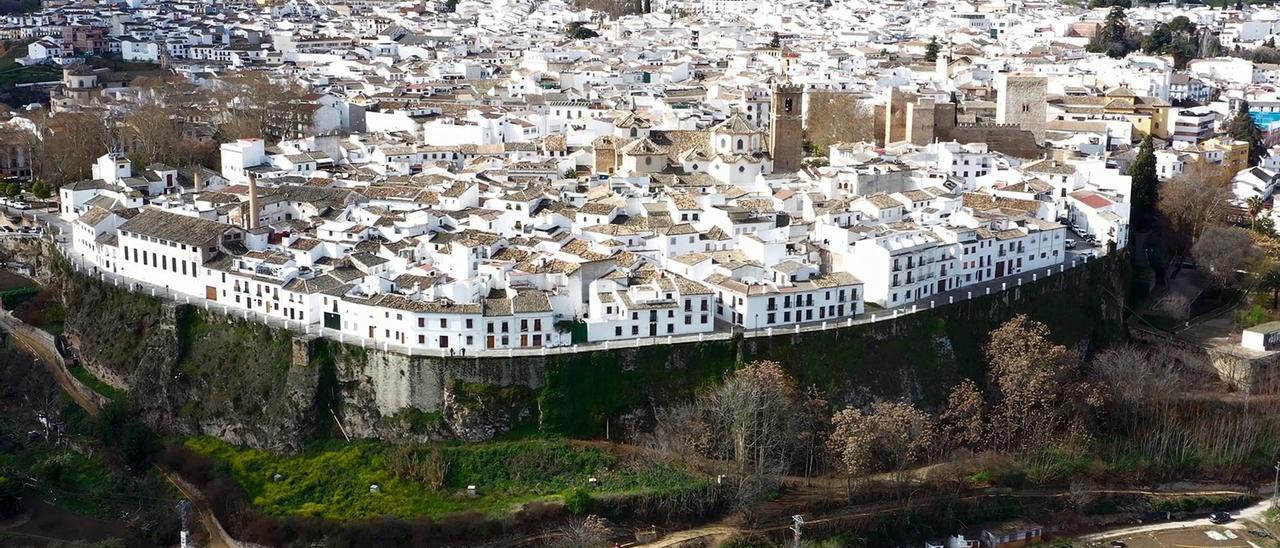
In the south of the province of Cordoba lies the National Park Sierras Subbéticas. The steeply sloping terrain rises up above beautiful narrow valleys and looking over the valleys is the idyllic Andalucian town called Priego de Cordoba. Nowadays Priego de Cordoba could easily be considered “The Mecca” of Extra Virgin Olive Oil. The proportion of premium olive oil producers working in this region is unlike any other in the world, so much so that it is renowned worldwide for it’s quality.
“D.O Priego de Cordoba” is a “Protected Designation of Origin” (PDO) that guarantees top quality olive oil and prides itself in producing exceptional oils and maintaining very strict levels of control. The protected region spans 29,600 hectares encompassing four municipalities Almedinilla, Carcabuey, Fuente Tójar y Priego de Córdoba. The certified D.O Priego de Cordoba extra virgin olive oils from this region have amassed over 400 prizes across the globe. In recent years the oils from Priego de Cordoba have been in all the top ten lists, awards and competitions worldwide and not surprisingly the town hosts “ The World Congress for Olive Oil Sensory Analysis” where you will find the finest olive oil experts from around the world, amongst them my friend Juan Ramon Izquierdo, head of the Tasting Panel for the Ministry of Agriculture here in Spain, an authentic “guru” and leader in his field.
The town is slightly off the beaten track but it is easily reached, as it is just a one-hour drive from Granada, Cordoba, Malaga or Jaen. So for those of you that live in Andalucia I highly recommend a trip there to do some Olive Oil tourism and stock up with some of the finest olive oil Spain has to offer, it’s on your doorstep! Many of the Almazaras (mills) offer guided tours and tasting sessions for groups so if you can get a group together I would waste any more time! Three of my favourite producers from the region are Manuel Montes Marin who produces the brand “Portico de la Villa” which is exceptional, Mueloliva which I discovered after they produced an outstanding oil in the harvest of 2011/12 under their brand "Venta del Baron" which I have written about on many occasions (available in Carrefour) and lastly but not least, by any means, Almazaras Subbética which produce “Rincon de la Subbética” declared the best extra virgin olive oil in the world 2011-12 due to the vast amounts of accolades it accumulated over that season. However, all three oils have continued to win prizes and produce great harvests year in and year out.
.jpg) .jpg) .jpeg)
Portico de Villa Venta del Baron Rincon de la Subbetica
To be honest you will be hard fetched to find a “normal” olive oil in this region. If it carries this logo on the back of the bottle :
.jpg)
You can be sure it will be a great olive oil. The Protected Designation of Origin (P.D.O.) of Priego de Cordoba exclusively covers extra virgin olive oils made with the Hojiblanca, Picudo and Picual varieties. These oils have multiple culinary uses as they are high in polyphenols and thus have a longer shelf life, meaning their flavour (organoleptic qualities) will also last much longer, so if you are buying olive oil from the previous seasons harvest, which is what you will still find in the supermarkets, I would suggest these varieties, as opposed to Arbequina for example, which will have lost most of it’s “notes” after maybe eight months of being bottled. These varieties are especially indicated for dressing salads, fried food, roasts, baking and confectionary, pretty much anything apart from sauces, as they are particularly fruity and herbaceous in flavour.
The rugged and mountainous terrain of the Sierras Subbéticas national park enjoys a unique microclimate between 700m and 1000m above sea level, characterised by high rainfall and large temperature variations. It is in this setting that, through a combination of natural selection and traditional methods, the legendary olive trees have developed a peculiar hardiness and resistance to icy temperatures enabling them to withstand the passage of time and bear quality fruits year in and year out.
.jpg) .jpg)
.jpeg) .jpg)
The unique setting of rolling hills and olive tree mountains gives the town of Priego de Cordoba a very special feel and is quite simply a charming tourist destination. Priego de Córdoba has an abundance of monuments and sights: exploring its hidden corners you will be seduced by the charm and delight of this wonderful Andalusian town, the cradle of Spanish baroque in forms of fountains, churches and palaces. As well as an Arabic fortress Priego de Cordoba is home to one of the most idyllic historic towns in all of Andalucía, el “Barrio de la Villa” which was given the official title of Historic Centre of Priego in 1972. Its roots go back directly to medieval and Moorish times, and it is part of the “family” of the most typically Andalucian “barrios” which include the Albaicín in Granada or the Judería in Córdoba.
 
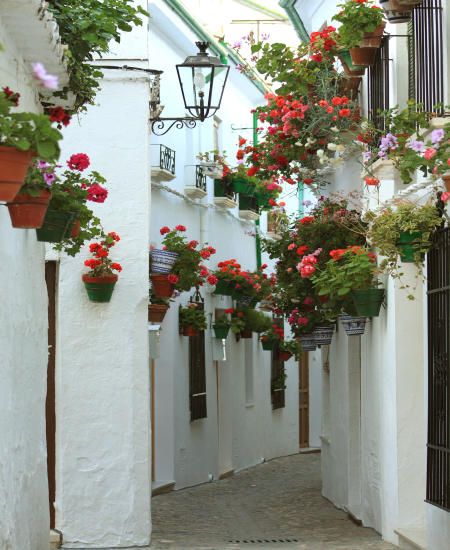 .jpg)
The narrow winding whitewashed streets offer a perfect blend of peace and beauty; a picture of tranquillity, painted with sunlight, flowers and stone. The town if peppered with beautiful stately homes and buildings. One which particularly stand outs is the Carnicierías Reales (Royal Butchers) which is a renaissance building from the XVI century open to the public. This was the slaughterhouse and meat market in the sixteenth century, designed by Francisco del Castillo. The entrance is built in a Mannerist style with an Italian influence. So what can I say, even if olive oil isn’t up your street, Priego de Cordoba is well worth a visit and who knows if you try the olive oil straight off the press, I’m sure you’ll be hooked for ever.
 2
Like
Published at 8:02 PM Comments (0)
2
Like
Published at 8:02 PM Comments (0)
How Coffee & Olive Oil have developed in Spain
Friday, September 22, 2023
Coffee and olive oil in Spain have more in common than you might think and unfortunately not for the right reasons. Both are wonderful products and play such an important role in the Mediterranean lifestyle or diet: Olive oil for its health properties and culinary value and coffee for its social implications.
However, history and social circumstances have led to a general misunderstanding of what is actually good olive oil and what is good coffee and this lack of knowledge and false belief has led a nation along for generations and only recently are people starting to wake up to this misconception. Who would have thought that when a Spaniard working at an olive mill in his local village gave you a few litres of olive oil from the recent harvest, you would have probably received what is now referred to as just "olive oil" - not extra virgin. Certainly, the elder generations and those in their 40’s grew up with low-grade olive oil at home convinced they were consuming the nectar from the sun-blasted olive groves of their precious homeland. But this is through no fault of their own, technology available then was unable to prevent the contamination of residues left on the millstones and knowledge around the needs of the olive tree was no way near as advanced as they are today. So people all over the Mediterranean got used to what they believed was top-quality olive oil but this is one example where technology has actually helped us obtain the best from nature and traditional methods are in fact detrimental to the quality. Nowadays all olives are blended into a pulp and centrifuged not crushed with millstones and then pressed through mats, or at least they should be.
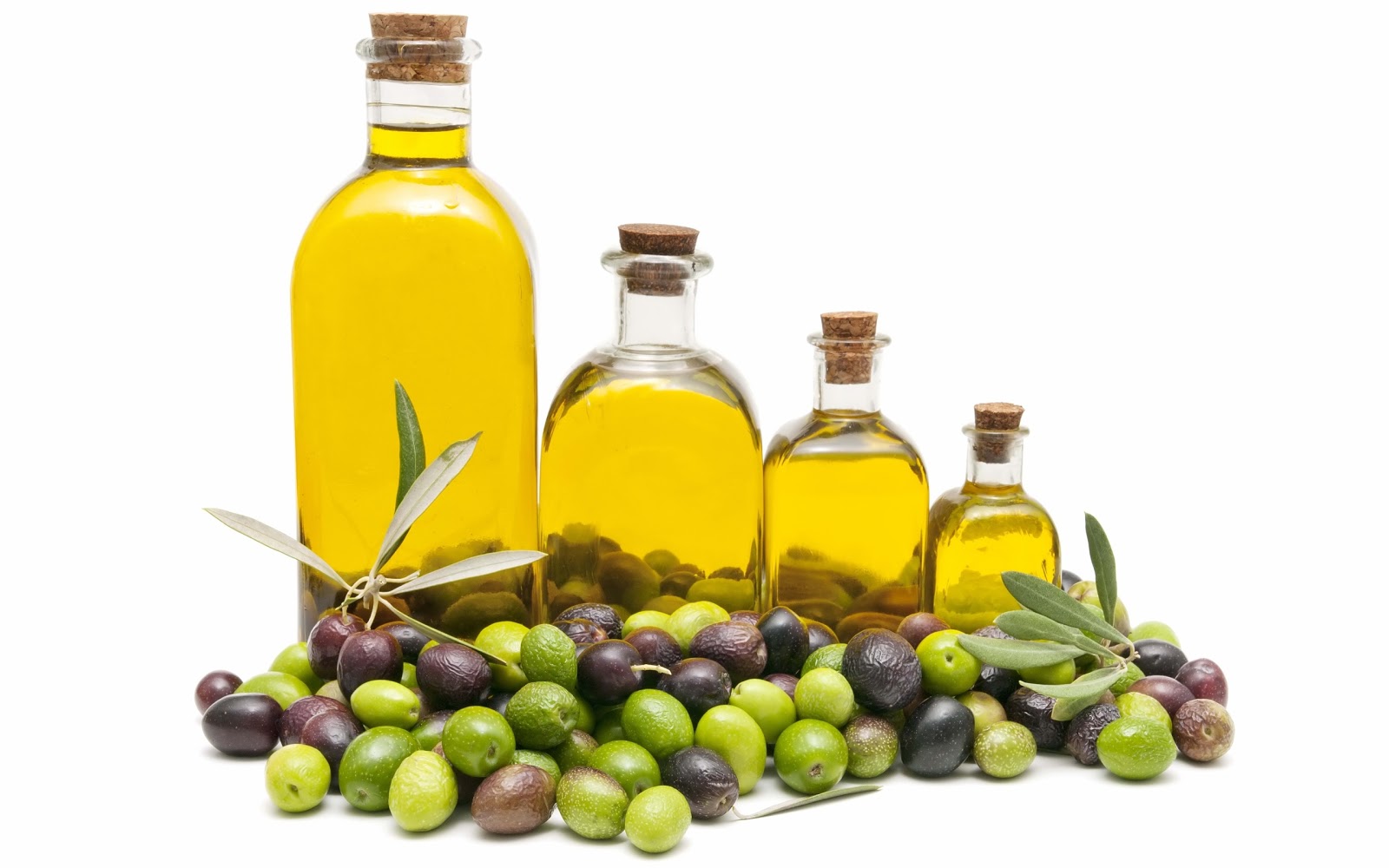
These classical traditional techniques that some customers find enchanting and some brands use as a marketing pull are actually a warning sign that you should probably stay well clear of them. It is impossible to achieve the same quality in a “traditional mill” when compared to a modern mill. But what this has created is a palate for poor quality. So what tastes "good" because it is all they know is actually bad olive oil. So much so that many producers centre on this palate of tastes to ensure their sales even though they are capable of producing better quality oils and unfortunately still today the majority of olive oils in supermarkets are of poor quality, especially in the UK. Some regions deliberately produce oil from frozen olives, as it is the local taste that they have become used to over the years. Naturally, the taste is awful for those who know good olive oil. So what we end up with is a leading nation in olive oil production that doesn’t really understand what good olive oil is, or better said if given a bad olive oil would almost definitely say it was good, really anyone can appreciate a good olive oil once given the opportunity to taste it, the fruitiness speaks for itself.
I always have top-quality olive oil at home and when friends and family come round for a meal they will always be served it. Once they smell it and taste it they are always blown away; "wow! It smells so good, what’s in it?” they ask, thinking that it carried some fruit additive or infusion and the simple answer is nothing, it should always smell like that…fruit juice. It should not smell like oil, you should instantly know this came from a fruit. So only time will educate the people as to what real olive oil should taste and smell like and that will be no easy task with bulk producers more interested in making the extra penny, but this is where regulations and quality controls should be stricter. So learn more about olive oil and how you can recognise a real extra virgin.

Coffee has a similar story. What is known in Spain and other countries as café torrefacto or Café Torrado is a coffee, which has received special toasting, special because it is different, not because it is better. Back in the 40’s there was a huge shortage in coffee and it was extremely expensive so substitute drinks started to appear in households around the country such as chicory root or cereal seeds toasted with sugar and their consumption became widespread. This same technique of toasting with sugar was applied to coffee too as it was believed that the coffee maintained its freshness for longer as the fine coating of sugar was thought by some to delay the aroma escaping from the bean and the oxygen entering the bean, as modern techniques of preservation were obviously not available. But the fact that sugar was involved in the process helped tremendously with its success after many years of sugared chicory root.
But what was this process of Torrefacto and what results did it achieve?
Well, a coffee bean acquires its taste and aroma during the toasting process, with Torrefacto café, sugar is added to the beans. In the past up to 20% of the volume but now it is regulated at a maximum of 15%. This sugar is added in the last stage of the toasting process as the temperature is at its highest, approximately 200ºC, the sugar caramelises and forms a shiny film around the coffee bean. The only thing this achieves is a darker coffee in colour and more bitter in taste. The carbonised sugar masks the majority of the coffee's qualities in terms of taste and aroma thus the technique was only really justified when the coffee bean was of very poor quality as the technique provides a certain uniformity and balance to the taste. However, nowadays its consumption is not recommended and it is considered harmful to one’s health.
Firstly because it is much harder for the digestive system to cope with and thus people with ulcers or stomach problems will have difficulty consuming this coffee but more importantly it has been banned in many countries around the world, as it is believed to be carcinogenic. This technique is only known or used in Spain, Argentina, Costa Rica, Bolivia, Mexico, France and Portugal. In the rest of the world, it is unheard of.
Although its use and consumption were perfectly understandable in those days it became a habit and the norm within Spanish society and continued even when economic conditions had improved. When the coffee sector was opened up in 1980, controlled up to then only by the state, laws changed and a new market was made available for large companies to tap into. Although they were unaware in those days, they took advantage of the widespread torrefacto coffee, which was approved by the state, cheap, balanced and well accepted by the Spanish consumers and started to mass-produce it. This not only convinced the public that coffee should be strong and bitter but it also promoted the habit of adding more milk to the coffee to make it more acceptable and logically limited the size of the servings.
Slowly but surely 100% natural coffee started to make its way in but initially only by means of blends, at first 80% torrefacto -20% natural. As time moved on these percentages started to change but there is still a long road ahead before the Spanish really start to appreciate 100% natural coffee. Today we can still see manufacturers offering especially to bars and restaurants 50/50 blends. However, in the north of Spain it is now far more common to find 100% natural coffee and the further north we go less torrefacto you will find. On the other hand in Andalucía you will find 60/40 (natural/torrefacto) and 50/50 and even in some villages you can still find 100% torrefacto, which is quite incredible nowadays and shouldn’t be allowed quite frankly.
So, in conclusion, please make sure your olive oil is fruity and your coffee is 100% natural, your body and your palate will thank you for it.
 0
Like
Published at 8:21 PM Comments (3)
0
Like
Published at 8:21 PM Comments (3)
Zarangollo - Welcome to Murcia
Friday, September 15, 2023
It may not look very photogenic, but "Zarangollo" is one of those dishes that makes any Murcian's mouth water. Simple, popular and of humble origin, Zarangollo shares characteristics with so many other recipes from Spanish gastronomy, but it has 'something' that makes it a very special dish.
As is the case with many recipes in Spain, being so simple, every household has it's own particular version as well as accepted variants with different ingredients throughout the Region. It is a typical dish during the Spring Festivities and the September Feria, with close ties to Murcia's tradition of vegetable growing.

The three basic ingredients for Zarangollo are onion, courgette and egg, and it can also include potatoes. The most traditional preparation consists of frying the spring onions ó sweet onions with the vegetables.
Ideally, prepare twice the weight of courgettes to onions. Here the star is the courgette. It is also best to choose medium-sized specimens, which you can either peel or not. Personally, I don peel them. Use a small amount of oil to avoid soaking up too much fat, the only real trick is to let the vegetables cook slowly in their own juices until they are very tender. Don't rush it. Eggs, if possible, should be free-range. They are always thrown in without beating, stirring very gently so that the mixture is smooth. Fancy giving it a go? This is what you'll need for 4 people:
1-2 Large sweet brown onions or large spring onions
3-4 medium-sized courgettes / about 1kg
3 Large Free range eggs (add more if they are small)
Extra virgin Olive Oil
Salt and Black Pepper
Steps to take:
Peel the onion and wash the courgettes. Cut the first one into a fine julienne. Heat a couple of tablespoons of olive oil in a large pan and fry the onion with a pinch of salt. Lower the heat and fry until very tender and they start to caramelize a little.
While the onion is cooking, wash and peel the courgette if you wish to do so, I don't peel it though. If you do, be careful not to remove too much flesh. Slice the courgette into thin discs.
Add the courgette to the onion, season lightly and stir well. First cook over high heat stirring constantly, so that the water is released. If all the ingredients don't fit at once, wait until it reduces a little to make room for the rest. It will reduce in size considerably.
When the courgette is slightly cooked, lower the heat and let it cook slowly. This will create a concentrated flavour and also a very smooth texture. Stir from time to time and keep cooking until very tender, about 40-50 minutes.
Finally, crack the eggs directly on top, season them and stir gently, mixing them into the vegetables and breaking the yolks. The idea is that they cook little by little, staying very juicy or almost liquidy, without transforming into scrambled eggs or an omelette.
Cook for a few more minutes over very low heat until the texture is right, they should juicy but not a liquid. Until you give this a go many not know exactly what I am trying to describe! Remove from the heat and let them rest for about 5 minutes and then serve immediately or refrigerate when cool. It can hold very well for several hours in the fridge, so you can make it ahead of time if you need to.

Zarangollo can be accompanied by salad and, of course, bread to dip. However it doesn't have to be the main meal, you can combine it with almost anything from Pisto to chips or even meat and fish.
So, there you go. Enjoy!
 3
Like
Published at 10:11 PM Comments (1)
3
Like
Published at 10:11 PM Comments (1)
'Arroz con Costra' - Baked rice with a twist
Thursday, September 7, 2023
Arroz con Costra is yet another great Spanish rice dish that is relatively simple to make and tastes delicious. Claimed to be from the Southern-Alicante/Murcia region of Spain, this rice dish is a perfect example of how different cooking techniques are blended between regions.
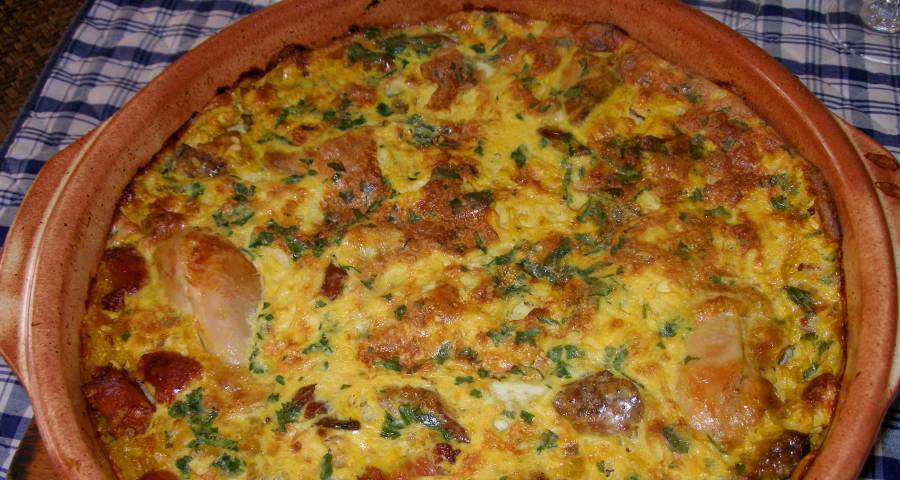
Alicante is one of Spain's best regions for rice dishes, after Valencia where the ever-famous paella originated. However this dish is an unusual blend between a casserole and a paella, and when including an egg crust, it makes for a very unique but traditional dish.
The name of the dish, 'Arroz con costra' derives from this 'egg topping' - 'costra' means ‘crust’ in Spanish when used with food. This is because when the egg is baked on the top of the rice casserole, it turns into a tasty crust that compliments the meal exquisitely.
In this recipe, it is customary to include a typical Spanish sausage called 'butifarra blanca'. This is a white sausage and is typical of Murcia and the Valencian Community. The sausage is white as it is only made from pork meat. However, if you can't find Butifarra blanca you can replace it with a similar white sausage.
Similarly, chicken is used in this recipe but many traditional versions of the dish use rabbit so you can choose whichever you prefer.
The largest dish of 'Crusty rice' ever to be cooked was made using 1,500 eggs, 100 kilograms of rice and 120 kilograms of rabbit. The dish, which provided 1,500 servings, made it into the Guinness Book of World Records, helping immortalise the dish forever.

This is what you will need for 6 servings - Crusty Rice with Spare Ribs and Chicken
Ingredients:
• ½ cup Olive oil
• ½ lb spare ribs, chopped
• 2 butifarras blancas, cut into 2cm thick slices (optional)
• ½ lb pork loin, cut into large cubes
• 6 chicken legs
• 1½ tsps salt
• 2 tomatoes, peeled and chopped
• 4 cups chicken stock
• 1 tsp sweet paprika
• 2 cups Spanish round rice
• 6 eggs, beaten
Preparation:
• Preheat the oven to 230ºC (450ºF).
• Heat the olive oil over a medium-high heat in a large (around 30 centimetres in diameter), deep casserole dish. Add the spareribs, sausage slices, pork and chicken and cook, turning as necessary, for around 10 minutes or until the meat is nicely golden brown all over, turning to a slight crisp.
• Add the salt and the tomatoes to the pan and mix well.
• In a saucepan, bring the chicken stock to the boil and then turn down the heat, but keep it at a slight simmer. It needs to be hot when you add it to the rest of the dish.
• Add the paprika to the casserole dish containing the meat and tomato mixture and mix briskly to mix the flavour in. Then add the stock to the mixture and turn up the heat to high, bringing it all to the boil quickly
• Add the rice and stir the mixture to blend it with the rest of the ingredients, and make sure that it is evenly distributed throughout.
• Turn the heat down to medium-low and cook for 3 minutes without stirring.
• Next, place the casserole dish in the oven and bake it for 10 minutes or until the rice has become soft and absorbed most of the stock. Pour the beaten eggs evenly over the surface of the rice and bake for a further 5 minutes or until the eggs forms a crust on the top of the dish.
• Remove from the oven and serve immediately.
Enjoy!
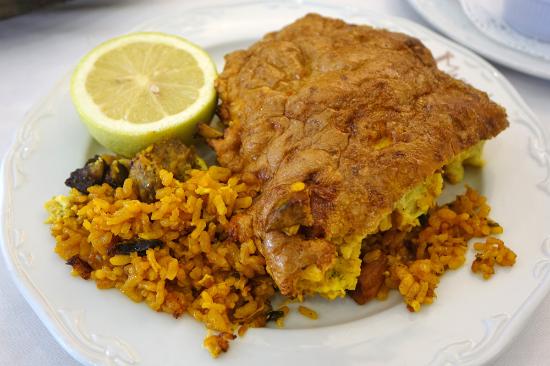
 3
Like
Published at 9:14 PM Comments (0)
3
Like
Published at 9:14 PM Comments (0)
Spam post or Abuse? Please let us know
|
|